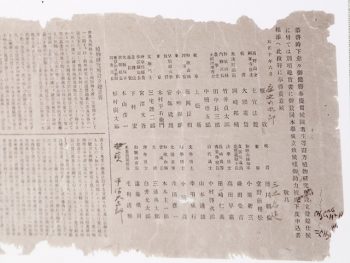Those who were charmed by Kumagusu’s extensive knowledge and his personality spared no effort in helping his research.
There were many supporters during his time abroad: the American botanist William Wirt Calkins; Frederick V. Dickins, the registrar of London University; Sir Augustus Wollaston Franks and Charles H. Read at the British Museum; Yoshikusu Nakai, who helped his life in London; Arthur Lister, president of the British Mycological Society, and his daughter Gulielma; and Walter T. Swingle, who invited Kumagusu to an academic post in the United States.
And there were many in Japan who supported him: Yanagita Kunio, with whom he exchanged views on folklore; Koaze Shirō, Uematsu Shigeru, and Hiranuma Daizaburō, who were known for the study of slime molds; and Kashiyama Kaichi, known for the study of mushrooms. His brother, Tsunegusu, supported him economically over a long period of time.
Kitahaba Takesaburō, a doctor and close friend since his schooldays, also helped, and Saika Teijirō, a local newspaper reporter, helped organize his writings after his death for publication. Noguchi Ritarō supported Kumagusu’s family after his death and made efforts to honor his accomplishments.
In various ways, many people supported Kumagusu academically, financially, or in spirit.
